Reviewer's Note: The S20 was provided for review by Ray Tactical. Please see their website or CPFMP thread for more info.
Warning: pic heavy, as usual.
Manufacturer Specifications:
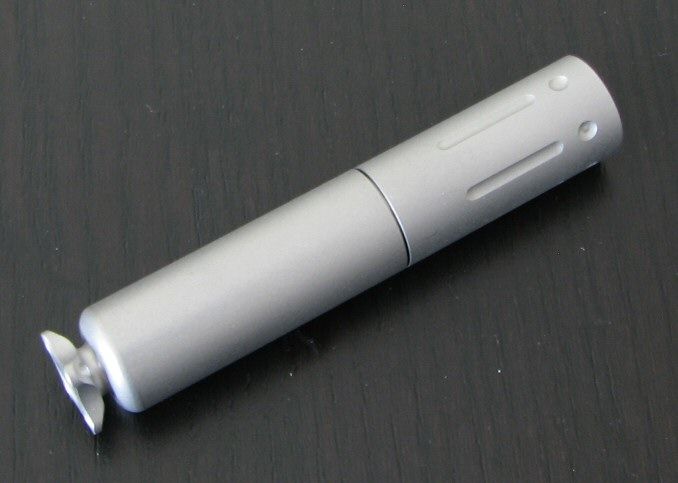
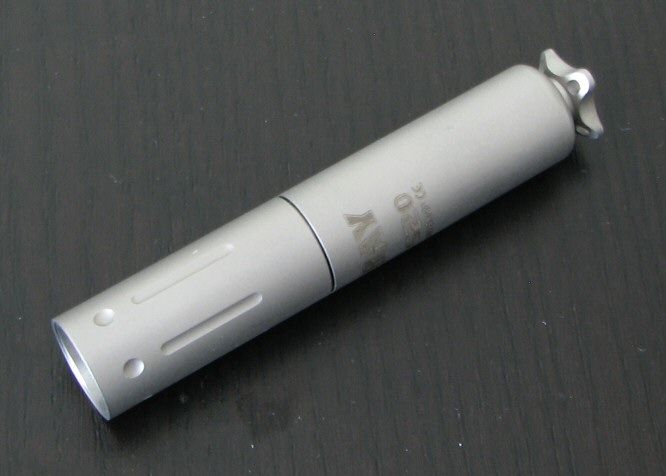
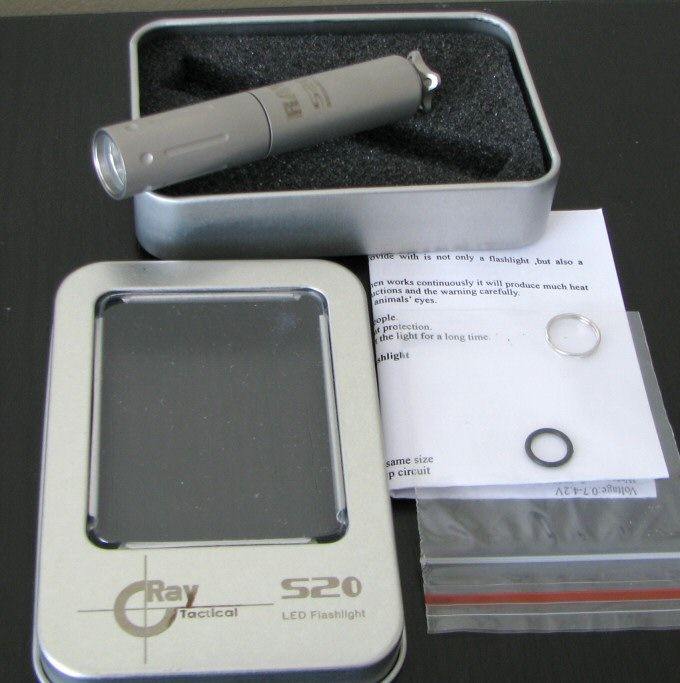
The lights comes a presentation-style metal-framed box with clear plastic window. Inside, in cut-out foam is the light with a manual, split ring, and replacement o-ring.
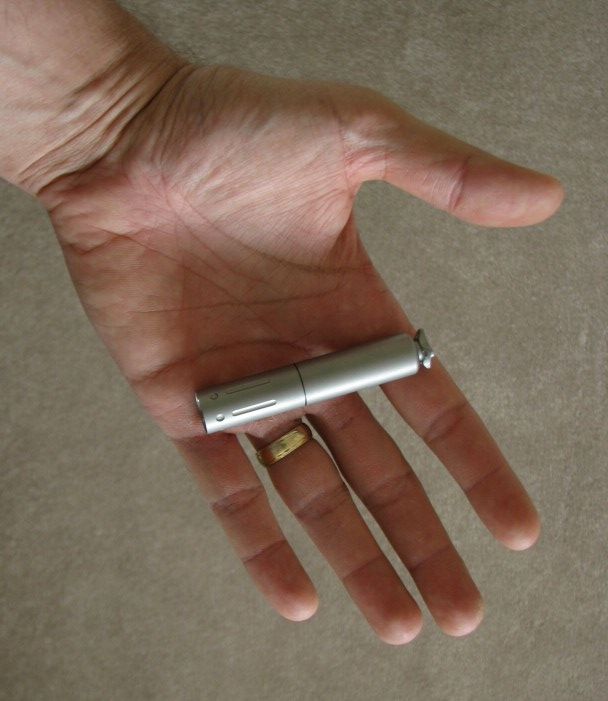
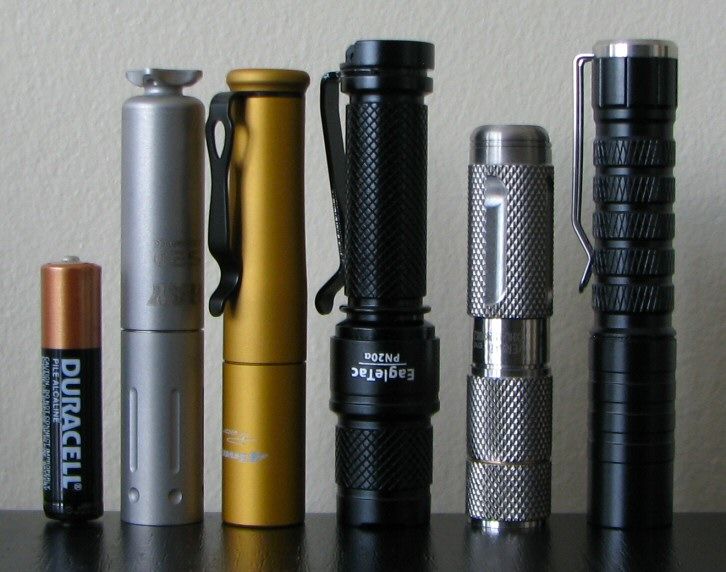
From left to right: Duracell alkaline AAA, Ray S20, 4Sevens Preon 1, Eagletac PN20α, VersaTi, LiteFlux LF2XT.
S20: Weight 25.5g, Length 76.1mm x Width 14.1mm
PN20α: Weight 22.9g (with pocket clip), Length 80.1mm x Width 16.0mm (bezel), 18.6mm (max, around base)
Preon 1: Weight 15.3g (with keychain clip), Length 75.6mm x Width 14.0mm (bezel)
Consistent with the stainless steel construction, the S20 is heavier than your typical 1xAAA light. You don't see many stainless steel pocket lights, although the material is well suited for withstanding keychain carry (i.e. steel is structurally stable, and scratches won't matter much). Note that steel doesn't transfer heat as well as aluminum, though.
Personally, I quite like the sandblasted finish – very stylish. There are no chips or scratches on my sample. Despite the lack of knurling, I actually found it reasonably "grippy" – at least as grippy as the Preon series.
There are no chips or scratches on my sample. Despite the lack of knurling, I actually found it reasonably "grippy" – at least as grippy as the Preon series.
No clip or wrist-strap is included (other than the split ring).
Identification labels are a dark grey against the background, which can be a bit hard to read.
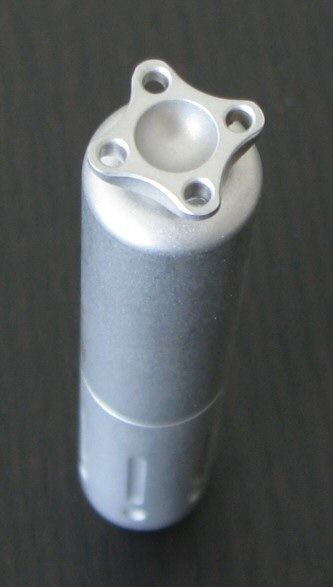
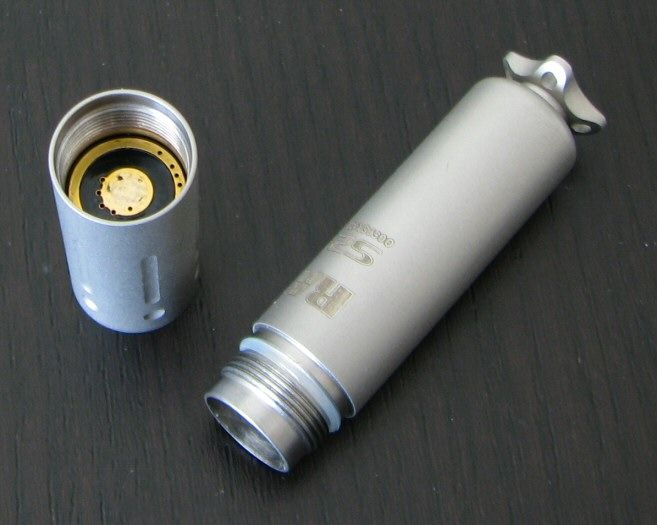
Although anodization (as such) is not possible on steel, Ray has managed to prevent activation through the screw threads (as choombak suggested, it looks like the negative contact ring in the head is isolated from the steel body, so only makes contact when fully tightened).
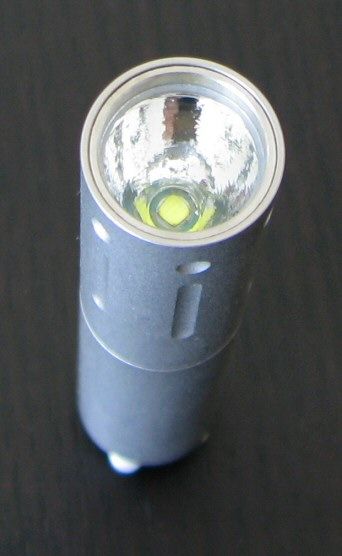
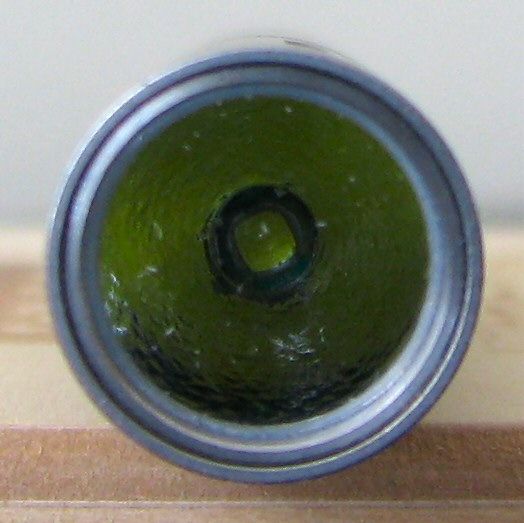
The S20 uses the newer XP-G emitters (R5 output bin), coupled with an OP reflector.
I've recently moved, and haven't had a chance to set up a proper beamshot closet yet, but here's a quick comparison to the recently reviewed Eagletac PN20a (both on Hi on Sanyo Eneloop AAA, about ~1 meter from a white wall).
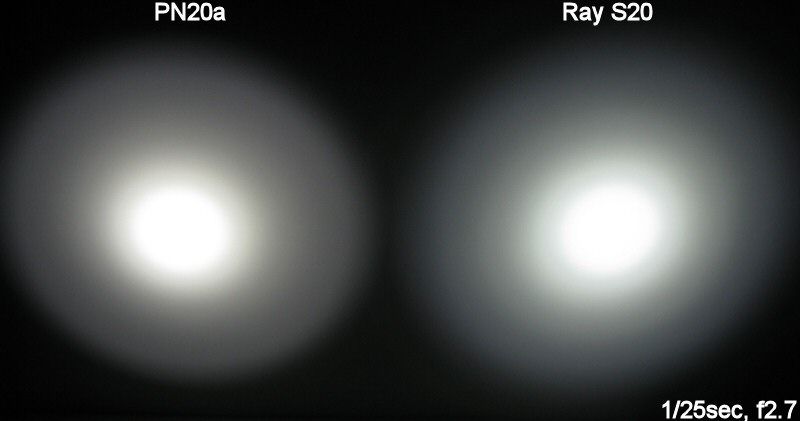
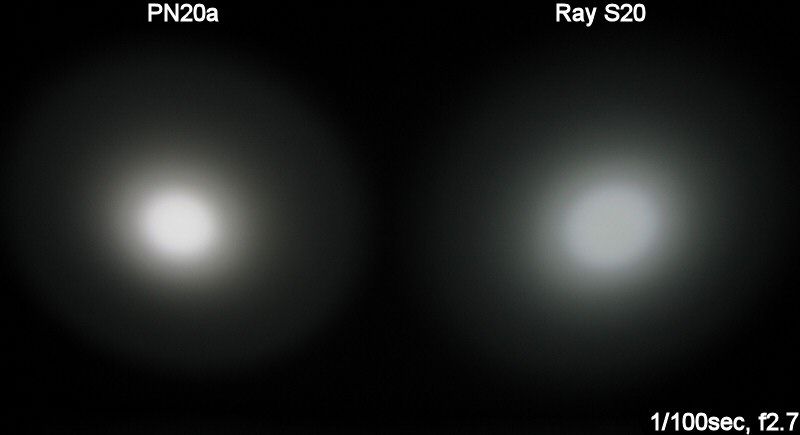
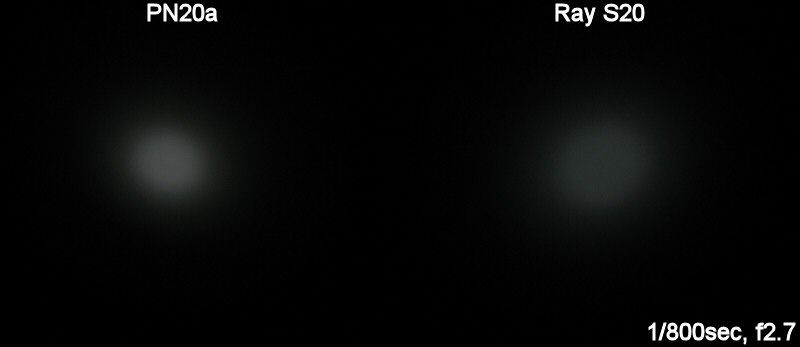
Note: Overall spillbeam width is narrow on both the lights, compared to a typical 1xAAA light. Sorry, I hope to add more beamshots when I get properly set up here.
User Interface
Tighten the head to turn on the light, loosen to turn off.
Can't get much simpler than that.
Obviously no strobe, PWM, etc – single-stage only here.
Testing Method: All my output numbers are relative for my home-made light box setup, a la Quickbeam's flashlightreviews.com method. You can directly compare all my relative output values from different reviews - i.e. an output value of "10" in one graph is the same as "10" in another. All runtimes are done under a cooling fan, except for the extended run Lo/Min modes (i.e. >12 hours) which are done without cooling.
Throw values are the square-root of lux measurements taken at 1 meter from the lens, using a light meter.
Throw/Output Summary Chart:
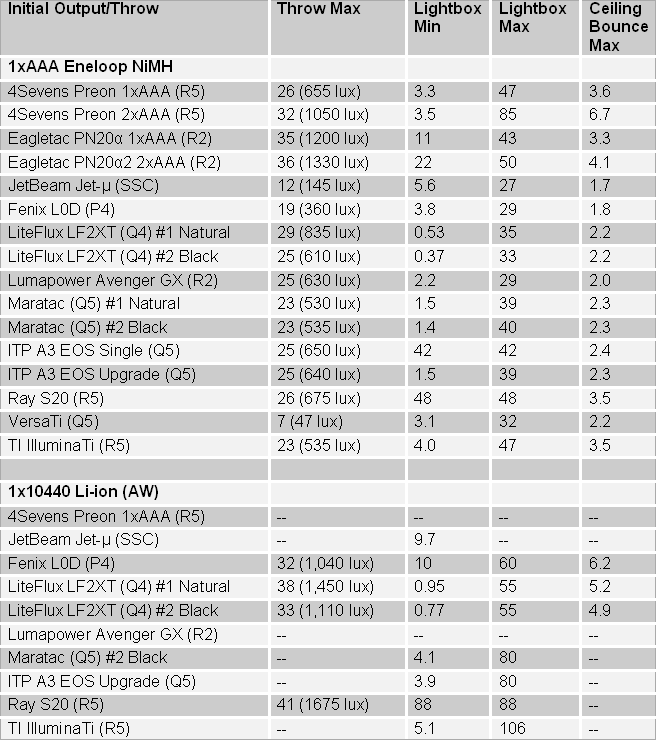
Output is pretty maximally driven on all battery types. Throw is about typical for a 1xAAA light.
Output/Runtime Comparison:
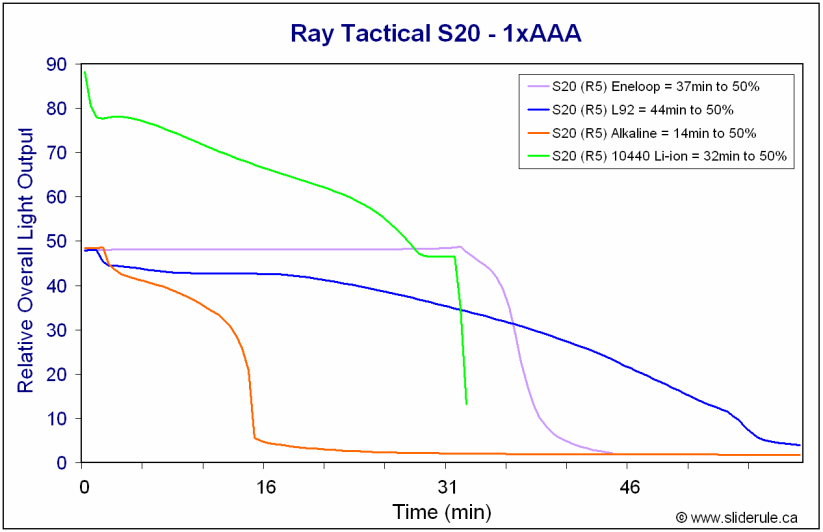
Regulation patterns looks reasonably good – about what I'd expect for a single-stage light. On regular <1.5V sources, the light tries to maintain regulation as long as it can, then drops to direct-drive. On 3.7V Li-ion, the light runs direct-drive until the regulated level kicks in (which is close to exhaustion of the battery).
Note there is no over-discharge protection (ODP) on 10440, so you need to make sure you recharge your cells BEFORE they drop out of regulation. By the time you see the final dip in output, you've already drained the cell to dangerous levels. :tsk:
As always, I don't typically recommend you run 1xAAA lights on 10440 (unless they are regulated to lower outputs, like the LiteFlux LF2XT). Hi output direct-drive puts out a lot of heat, and risks damaging the emitter over time.
So how does it stack up to the competition?
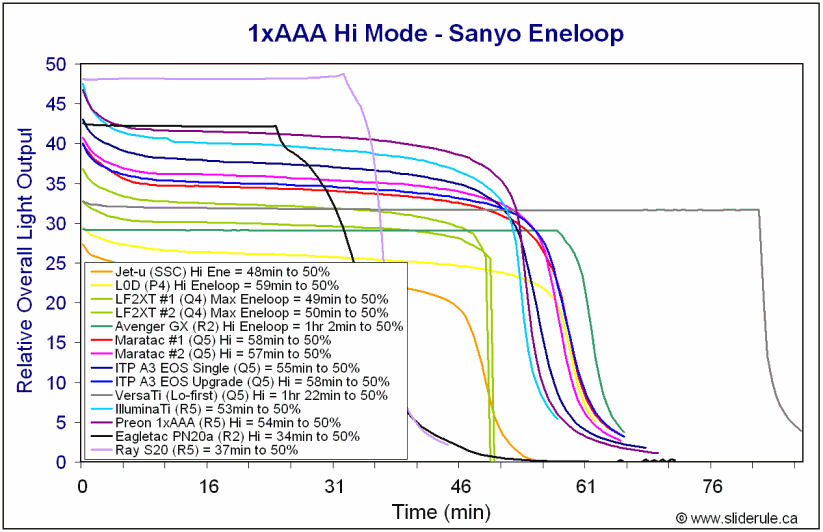
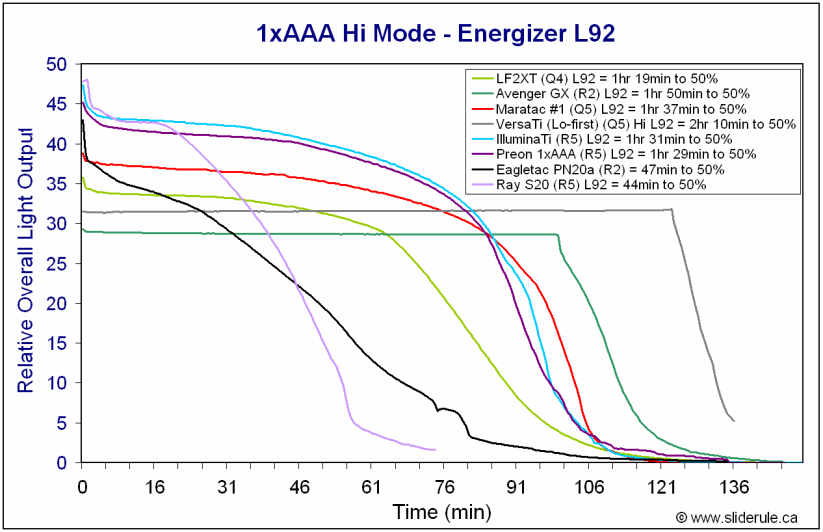
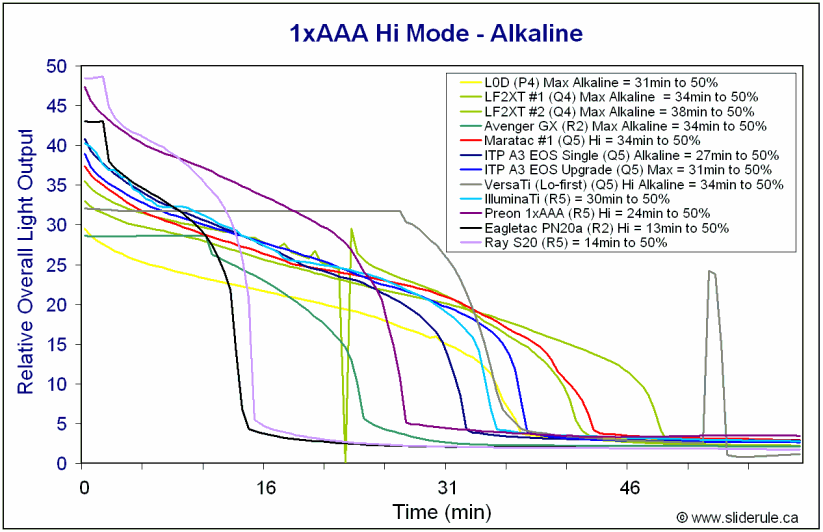
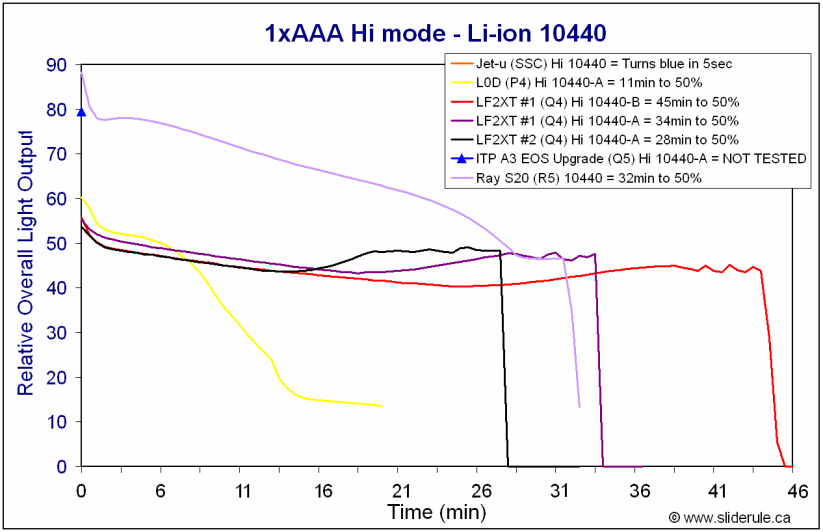
The S20 performs well on NiMH – as you would expect for a single-stage light (i.e. no complex microprocessor needed). Obviously, a maximally-driven 1xAAA light is not well suited for alkaline. Note also that L92 lithium runtime was relatively low.
Potential Issues
Single-stage only.
Stainless steel construction. While structurally stable, steel is heavier and less efficient for heat transfer than aluminum.
Maximally-driven on 1xAAA, so not well suited for primary alkaline (or L92 lithium).
Although rated to take 3.7V Li-ion 10440 cells, there is no over-discharge protection (ODP) feature. Be very careful of over-discharging your 10440 cells – you risk damaging them and rendering them unsafe for re-charging if you do.
Preliminary Observations
Not much to say here - I find it to be a stylish looking little light, that performs as expected for a maximally-driven single-stage 1xAAA.
The choice of material is obviously a matter of personal preference. While I'm not typically a fan of stainless steel, I can see it holding up well for keychain use. The sandblasted finish is particularly distinctive - I haven't seen it before, and I quite like it. Grip is also better than I expected, and I found the light easy to use single-handed.
Grip is also better than I expected, and I found the light easy to use single-handed.
Output/runtime performance is good for a maximally-driven single-stage light - except on primary alkaline or L92 lithium. But personally, I would prefer at least a two-stage light with a reasonable low level. :shrug:
As mentioned above, I would be wary of running this light regularly on unprotected 10440 Li-ion. Since there is no ODP, be sure you top up your cells frequently. I'm also concerned about how well the emitter will last with regular use at these drive levels (i.e. 10440 generates a lot of heat, which the small thermal mass and lower transfer efficiency of a 1xAAA stainless steel light will have trouble dissipating).
If you are looking for the absolutely brightest 1xAAA light currently on the market, and don't care for Lo modes, the S20 may fit your needs. Just realize that runtimes will be short, and there's no option for lower output.
Warning: pic heavy, as usual.
Manufacturer Specifications:
- LED:CREE XP-G (R5 bin)
- Max output:210 Lumens
- Reflector :delicate metal reflector
- Lens: Switzerland shock resistance coating mineral glass
- Material:303 stainless steel
- Body treatment :sandblast
- Batteries: one AAA battery or any other battery with same size
- Drive circuit :high efficiency wide voltage full tune-up circuit
- Switch :Twist head switch
- Voltage:0.7-4.2V
- Waterproof : IPX 8 waterproof standards
- Safely locked function
- Tail stand upside down function
- Size:diameter:14mm Total length:76mm
- Weight : 26g (without battery installed)
- Output & Runtime: Using one AAA battery: 86 Lumens for 80 minutes
- Using one rechargeable Li battery: 210 Lumens for 50 minutes
- MSRP: $44



The lights comes a presentation-style metal-framed box with clear plastic window. Inside, in cut-out foam is the light with a manual, split ring, and replacement o-ring.


From left to right: Duracell alkaline AAA, Ray S20, 4Sevens Preon 1, Eagletac PN20α, VersaTi, LiteFlux LF2XT.
S20: Weight 25.5g, Length 76.1mm x Width 14.1mm
PN20α: Weight 22.9g (with pocket clip), Length 80.1mm x Width 16.0mm (bezel), 18.6mm (max, around base)
Preon 1: Weight 15.3g (with keychain clip), Length 75.6mm x Width 14.0mm (bezel)
Consistent with the stainless steel construction, the S20 is heavier than your typical 1xAAA light. You don't see many stainless steel pocket lights, although the material is well suited for withstanding keychain carry (i.e. steel is structurally stable, and scratches won't matter much). Note that steel doesn't transfer heat as well as aluminum, though.
Personally, I quite like the sandblasted finish – very stylish.
No clip or wrist-strap is included (other than the split ring).
Identification labels are a dark grey against the background, which can be a bit hard to read.


Although anodization (as such) is not possible on steel, Ray has managed to prevent activation through the screw threads (as choombak suggested, it looks like the negative contact ring in the head is isolated from the steel body, so only makes contact when fully tightened).


The S20 uses the newer XP-G emitters (R5 output bin), coupled with an OP reflector.
I've recently moved, and haven't had a chance to set up a proper beamshot closet yet, but here's a quick comparison to the recently reviewed Eagletac PN20a (both on Hi on Sanyo Eneloop AAA, about ~1 meter from a white wall).



Note: Overall spillbeam width is narrow on both the lights, compared to a typical 1xAAA light. Sorry, I hope to add more beamshots when I get properly set up here.
User Interface
Tighten the head to turn on the light, loosen to turn off.
Can't get much simpler than that.
Obviously no strobe, PWM, etc – single-stage only here.
Testing Method: All my output numbers are relative for my home-made light box setup, a la Quickbeam's flashlightreviews.com method. You can directly compare all my relative output values from different reviews - i.e. an output value of "10" in one graph is the same as "10" in another. All runtimes are done under a cooling fan, except for the extended run Lo/Min modes (i.e. >12 hours) which are done without cooling.
Throw values are the square-root of lux measurements taken at 1 meter from the lens, using a light meter.
Throw/Output Summary Chart:

Output is pretty maximally driven on all battery types. Throw is about typical for a 1xAAA light.
Output/Runtime Comparison:

Regulation patterns looks reasonably good – about what I'd expect for a single-stage light. On regular <1.5V sources, the light tries to maintain regulation as long as it can, then drops to direct-drive. On 3.7V Li-ion, the light runs direct-drive until the regulated level kicks in (which is close to exhaustion of the battery).
Note there is no over-discharge protection (ODP) on 10440, so you need to make sure you recharge your cells BEFORE they drop out of regulation. By the time you see the final dip in output, you've already drained the cell to dangerous levels. :tsk:
As always, I don't typically recommend you run 1xAAA lights on 10440 (unless they are regulated to lower outputs, like the LiteFlux LF2XT). Hi output direct-drive puts out a lot of heat, and risks damaging the emitter over time.
So how does it stack up to the competition?




The S20 performs well on NiMH – as you would expect for a single-stage light (i.e. no complex microprocessor needed). Obviously, a maximally-driven 1xAAA light is not well suited for alkaline. Note also that L92 lithium runtime was relatively low.
Potential Issues
Single-stage only.
Stainless steel construction. While structurally stable, steel is heavier and less efficient for heat transfer than aluminum.
Maximally-driven on 1xAAA, so not well suited for primary alkaline (or L92 lithium).
Although rated to take 3.7V Li-ion 10440 cells, there is no over-discharge protection (ODP) feature. Be very careful of over-discharging your 10440 cells – you risk damaging them and rendering them unsafe for re-charging if you do.
Preliminary Observations
Not much to say here - I find it to be a stylish looking little light, that performs as expected for a maximally-driven single-stage 1xAAA.
The choice of material is obviously a matter of personal preference. While I'm not typically a fan of stainless steel, I can see it holding up well for keychain use. The sandblasted finish is particularly distinctive - I haven't seen it before, and I quite like it.
Output/runtime performance is good for a maximally-driven single-stage light - except on primary alkaline or L92 lithium. But personally, I would prefer at least a two-stage light with a reasonable low level. :shrug:
As mentioned above, I would be wary of running this light regularly on unprotected 10440 Li-ion. Since there is no ODP, be sure you top up your cells frequently. I'm also concerned about how well the emitter will last with regular use at these drive levels (i.e. 10440 generates a lot of heat, which the small thermal mass and lower transfer efficiency of a 1xAAA stainless steel light will have trouble dissipating).
If you are looking for the absolutely brightest 1xAAA light currently on the market, and don't care for Lo modes, the S20 may fit your needs. Just realize that runtimes will be short, and there's no option for lower output.
Last edited:


